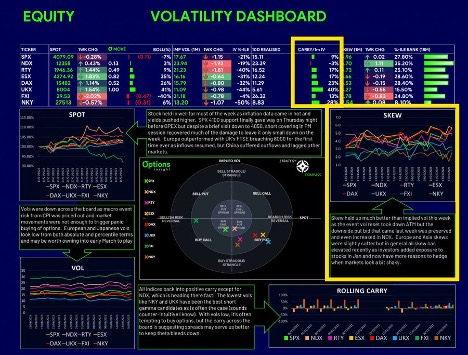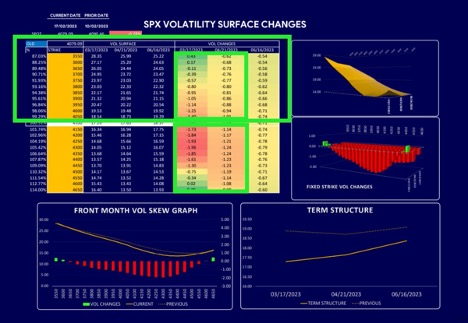Have you been vigilant with your recent hedging activity? If so, people like you are partly why #skew is catching a bid in US equities markets.
Despite these being protective flows, we feel this leaves a growing potential for a move down with a vol pop.

Here is a breakdown☟☟
Warning I: Persistently firm skew could be a symptom of dealer short downside in uncomfortable amounts given the macro risk.
Warning II: With #OPEX supportive flows out of the way, it’s important to stay on top of the market trends and keep a close eye on potential risks.
Even as vol has been resetting lower in US equities, skew has held up well.
A positive carry tells us that realized vol hasn’t been that spectacular vs implied (see first graphic below)
However, on the way down, skew is catching a bid, going up right across the US indices.
Why?
Because people actually own the market and they need protection.

Even Carl Icahn apparently bought Fed/March Puts, which made the rounds on #fintwit.
#VIX calls are getting bought in US indices, telling us that protection buying is going on.
Skew is not coming down as much, even if in absolute levels of Puts have pulled back.
Realized skew metrics also show short-dated downside bid vs at the money/upside (see second graphic below)
➠ KEY TAKEAWAYS
These conditions persisting would be a symptom of hedging activity taking dealers short downside in uncomfortable amounts given the macro risk.
Dealers are being lifted out of amounts they are not comfortable with being short.
And what’s the way market makers protect themselves when they get lifted out of a lot of volatility?
They keep their pricing high!
They don’t want to have larger short vega exposure once they start hitting their vega limits.
➠ Traders who stay vigilant and adaptable are more likely to weather market storms and come out on top.
So keep your hedging strategies up to date with market conditions and be prepared for any sudden changes in sentiment.
Is this stubborn skew a pre-cursor to an outsized break lower in the market as dealers are forced to hedge?
Let me know what you think in the replies!
Also, please leave a reply if you enjoyed this info as it helps the SEO push it to more people.
BONUS
Do you want this type of market research sent to your inbox daily?
How about trade ideas that make said research actionable?
Well then, don’t forget that right now, you can get a free month of everything Options Insight has to offer!
Just follow the link in my Twitter @options_insight and use code RV2023 at checkout.
How to lower risk and maximize returns using options.
It’s important to understand that stock options are a type of financial derivative that give you the right, but not the obligation, to buy or sell a specific stock at a certain price, within a certain timeframe. They can be used in a variety of ways to manage risk and potentially increase returns in your investment portfolio, but they can also be complex and require a good understanding of the underlying securities and market conditions.
Here are some ways that stock options can be used to manage risk and potentially increase returns in your investment portfolio:
Hedging: One of the main benefits of stock options is that they can be used to hedge against potential losses in your portfolio. For example, if you own a large position in a particular stock, you can use put options to protect against a potential downturn in the stock price. This gives you the right to sell the stock at a certain price, even if the market price falls below that level, thereby limiting your losses.
Generating income: Stock options can also be used to generate income in your portfolio. By selling call options on stocks you own, you can collect premium income, which can help offset potential losses or enhance returns. However, this strategy involves taking on additional risk, as you are essentially giving up some of your upside potential in exchange for the premium income.
Speculation: Another way to use stock options is for speculation, in which you take a position on the direction of a stock price movement. For example, you can buy call options on a stock you think will increase in price, or put options on a stock you think will decrease in price. This strategy can potentially result in high returns, but it also involves significant risk, as options can expire worthless if the stock price doesn’t move as anticipated.
It’s important to note that while stock options can be a useful tool in managing risk and maximizing returns, they can also be complex and require a good understanding of the underlying securities and market conditions. We’re here to help!
